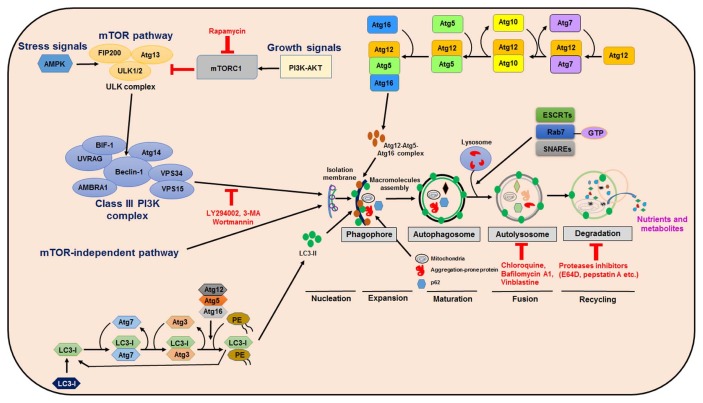Fig. 1.
Regulation of autophagy signaling pathway. Autophagy may initiate deprivation of nutrients or growth factors which activate AMPK and/or inhibition of mTORC1, leading to stimulation of ULK complex (FIP200 and ATG13). Beclin-1 become phosphorylated, leading to VPS34 activation and then initiation of phagophore formation. VPS34 complex function comprises a regulatory subunit like VPS15 (p150) and Beclin-1, their connection being with other regulatory factors e.g. AMBRA, ATG14, UVRAG, and BIF-1. Atg5–Atg12 conjugation involves Atg7 and Atg10 to form a complex, Atg12-atg5-Atg16 influences the formation of phagophores. Atg5 and Atg12 forms a complex with Atg16, which acts like an E3-function towards LC3-PE assembly (LC3-II). This has a role in the initiation of phagophore formation. LC3-II is a particular autophagy indicator marker which is eventually disrupted by autolysosomes. Autophagosome maturation also involves fusion with lysosomes which are mediated by Rab7, ESCRT and SNARE proteins, eventually leading to cargo degradation and recycling of nutrients and metabolites.

